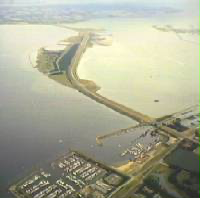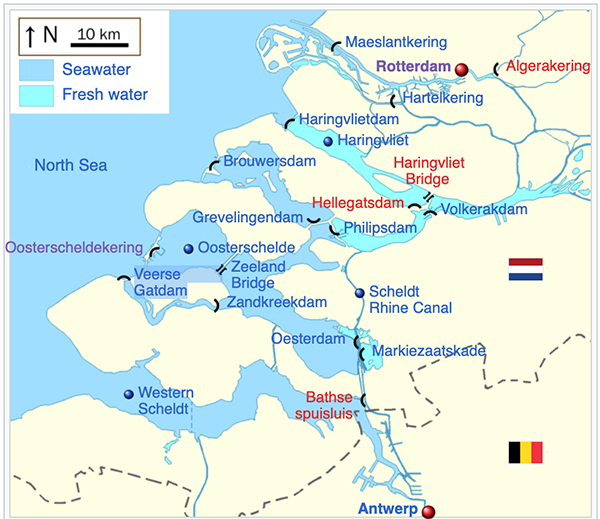The Delta Works
The Delta Works is a number of land protection projects in the Netherlands. Workers completed the series of dams, dykes, levees, locks, sluices, and storm barriers between 1954 and 1997. As part of the Zuiderzee Works land reclamation project, Dutch engineers built the 15-mile-long enclosure dam the Afsluitdijk in the 1920s and early 1930s, forestalling the influence of the encroaching North Sea and introducing two calm bodies of water, the Ijsselmeer and the Markermeer. Even so, the North Sea flooded a large area in 1953. 
In response, the Dutch government embarked on the Delta Works, designed to guard against further flooding. Accordingly, construction began on the Algerakering, a flood barrier in South Holland. Workers completed that barrier in four years; the next steps were the construction of dams, eight in all between 1959 and 1987 (Zandreekdam, Veerse Gatdam, Grevelingendam (left), Volkerakdam, Haringvlietdam, Brouwersdam, Markiezaatskade, Oesterdam, and Philipsdam. In amongst those was the construction of a flood barrier, Oosterscheldekering. The last three elements of the Delta Works were a lock, the Bathse spuisluis, and two flood barriers, Maeslantkering and Hartelkering. All were multi-year projects, and many carried on concurrently. The longest to build, was Oosterscheldekering, taking 26 years. The government of the Netherlands commits ongoing funding to upgrades of the elements of the Delta Works. A major renovation finished in 2015. 
|
|
Social Studies for Kids
copyright 2002–2025
David White




